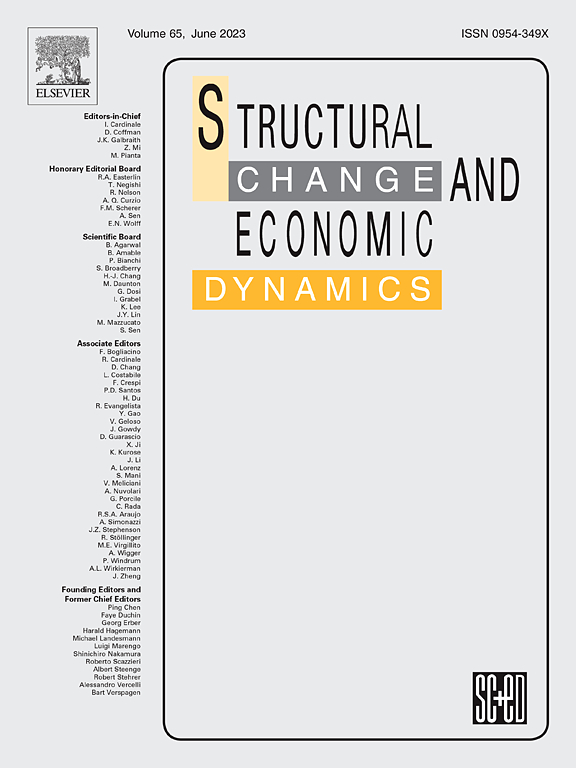全球多晶硅贸易网络供应风险动态评估:2000 - 2022年多维度分析
IF 5.5
2区 经济学
Q1 ECONOMICS
引用次数: 0
摘要
全球多晶硅贸易网络(GPSTN)已经发展成为一个日益复杂的系统,受到地缘政治紧张局势、环境挑战和健康危机的影响,加剧了对能源安全的担忧。作为光伏电池的关键材料,多晶硅是全球向可再生能源过渡不可或缺的组成部分。然而,在多晶硅供应中断期间,对特定国家脆弱性的定量评估仍然有限。本研究利用改进的级联故障模型和综合评估框架,通过分析2000年至2022年的GPSTN,解决了这一差距。该框架通过破坏性、传播性和脆弱性这三个新指标量化了各国作为风险发起者、传播者和脆弱接受者的作用。分析显示,自2000年以来,美国在破坏性方面持续占据主导地位,亚洲国家的破坏性不断升级,中国和美国的明显传播性,以及日本和中国由于依赖进口而变得更加脆弱。这种多维方法阐明了各国在供应中断期间的具体作用,并为政策制定者提出了有针对性的建议,以加强供应链的弹性和稳定性。研究结果表明,在评估一个国家在多晶硅贸易网络中的地位时,考虑多个维度至关重要,并强调了定制风险缓解战略的必要性。本文章由计算机程序翻译,如有差异,请以英文原文为准。
Assessing the dynamics of supply risks in the global polysilicon trade network: A multidimensional analysis from 2000 to 2022
The global polysilicon trade network (GPSTN) has evolved into an increasingly intricate system, shaped by geopolitical tensions, environmental challenges, and health crises, intensifying concerns over energy security. As a critical material for photovoltaic cells, polysilicon constitutes an indispensable component for the global transition towards renewable energy. However, quantitative assessments of country-specific vulnerabilities during polysilicon supply disruptions remain limited. This study addresses this gap by analyzing the GPSTN from 2000 to 2022, utilizing an improved cascading failure model and a comprehensive assessment framework. The framework quantifies countries' roles as risk initiators, transmitters, and vulnerable recipients through three novel indicators: destructiveness, transmissibility, and vulnerability. The analysis reveals the United States' persistent dominance in destructiveness since 2000, the escalating destructiveness of Asian countries, the pronounced transmissibility of China and the United States, and the heightened vulnerability of Japan and China stemming from their import dependence. This multidimensional approach elucidates country-specific roles during supply disruptions and advances targeted recommendations for policymakers to strengthen supply chain resilience and stability. The findings demonstrate the critical importance of considering multiple dimensions when evaluating a country's position in the polysilicon trade network and highlight the need for customized risk mitigation strategies.
求助全文
通过发布文献求助,成功后即可免费获取论文全文。
去求助
来源期刊

Structural Change and Economic Dynamics
ECONOMICS-
CiteScore
9.60
自引率
4.90%
发文量
159
期刊介绍:
Structural Change and Economic Dynamics publishes articles about theoretical, applied and methodological aspects of structural change in economic systems. The journal publishes work analysing dynamics and structural breaks in economic, technological, behavioural and institutional patterns.
 求助内容:
求助内容: 应助结果提醒方式:
应助结果提醒方式:


